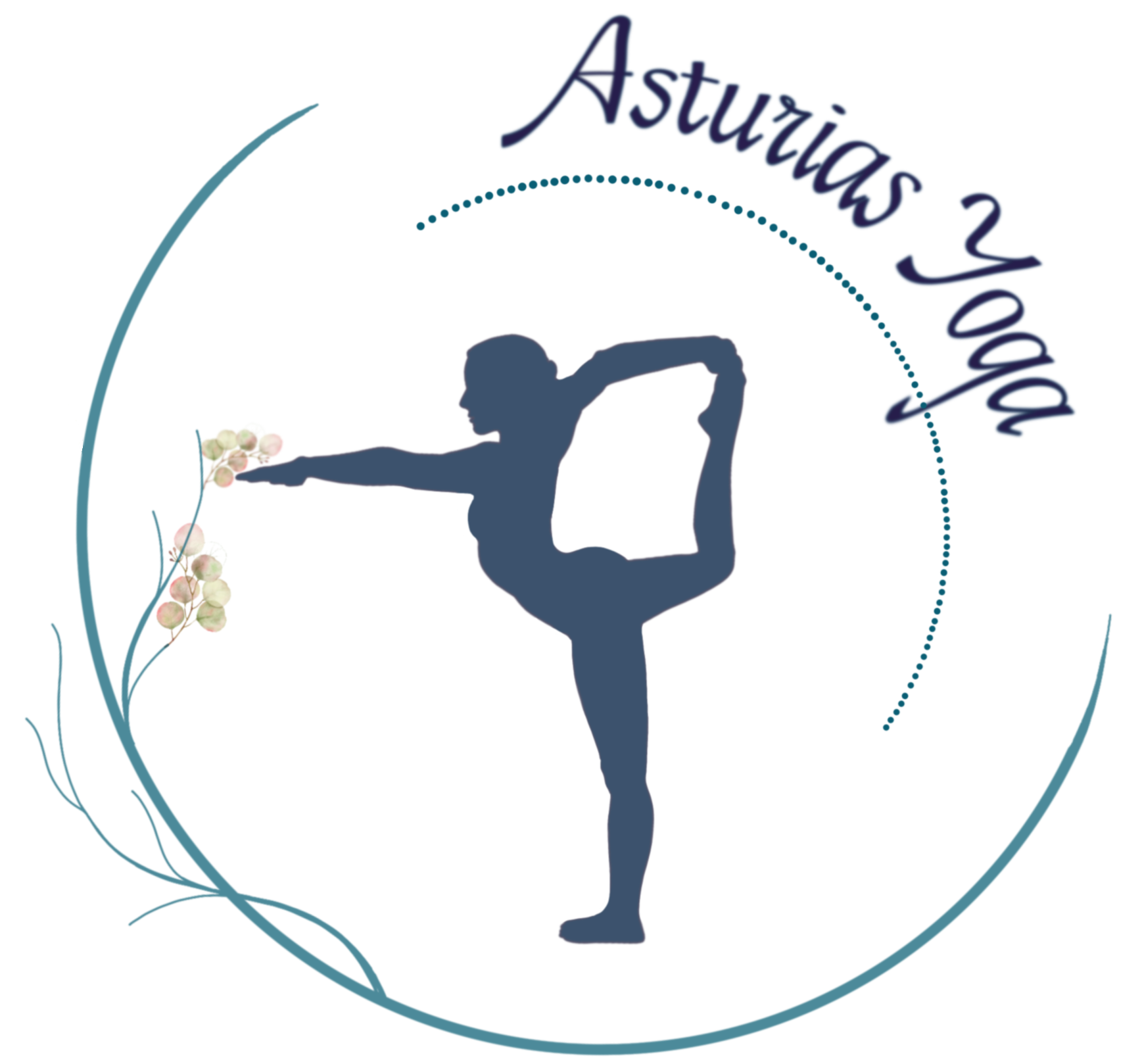Cycling the Indian Himalya
I didn’t know that my what had been drawing me to the Himalayan temple was the Sister of the Devil. That only became clear after I had paid Her homage.
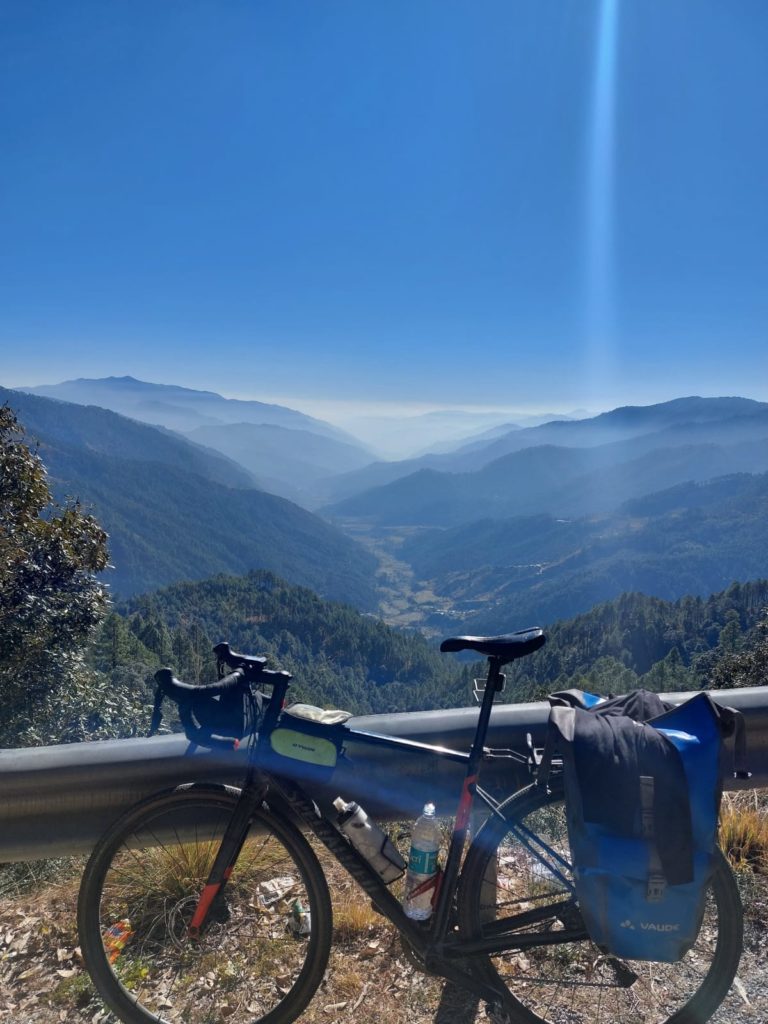
After the over-populated plains, the quiet winding roads, fresh air and monkey forests of the Himalayan foothills were blessedly welcome. In forest clearings people lived in small thatched-roof mud wall huts, the idyllic scenes of quiet pastoral life, free of electricity and motors moved my heart …’the soul of India is in her villages’ as Gandhi said. The illusion of India perhaps is in it’s headlong pursuit of Western style industrialization and digitization, whose incessant noise, distraction and copious pollution are laid bare in the urban streets, a parody of the West.
Two days of riding in steep sided forested valleys followed. Now I continually bordered the Yamuna as wound its way upriver below endless peaks around 2000m, mere foothills to what lay beyond. Many peaks had white temples on them. Hindu temples are frequently situated in stunning places, as if an adornment to Nature’s best. Any time I rounded a corner to an expansive and spectacular view of the mountains, there would be a temple. The mountain top temples obviously required significant devotion and effort to get to. No such effort however was ever necessary to get to mosques, which invariably are built in areas of populace. On my route, they were often plumped in the middle of run-down dirty towns, giving the working people a place of solace and solidarity in their midst – traits perhaps indicative of the essence of both religions. I saw my last mosque on the plains.
Two days of following the river upstream, gently gaining altitude were necessary toreach the base at the foot of the real climb – 50 km uphill and into thinner air in winter. I felt intimidated! Anxiety had me up and out before sunrise, but the temperature was sub-zero, and I didn’t get far before I spotted a small bonfire at the side of the highway, where I stopped, warmed myself and drank a number of chais with two friendly locals while I waited for the first rays of sunshine.
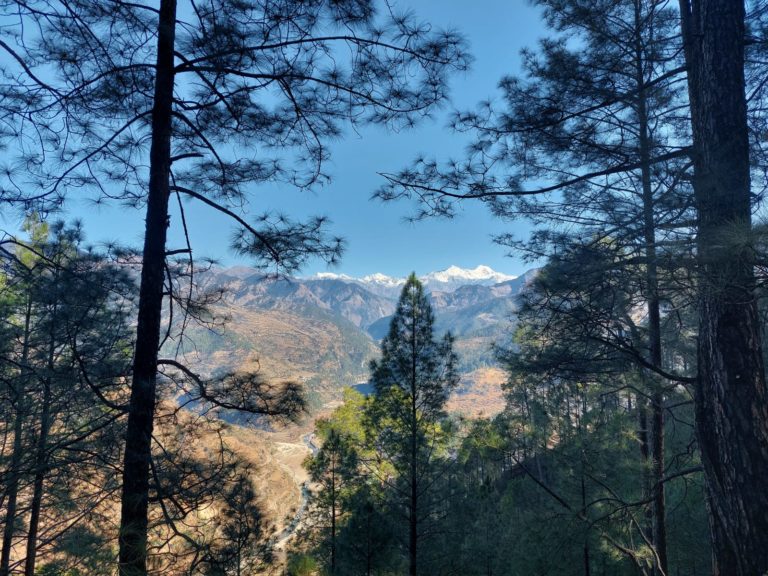
As I climbed the scenery became ever more dramatic. I cycled through enchanted forests of Deodar pines, past frequent waterfalls and occasional heavenly views of 7000m peaks visible at bends. The Yamuna river my eternal companion, was now rushing white-water as it crashed through boulders. The road had barely any traffic, which was no surprise there as it was often without surface, more a broken mountain track, suitable only for four wheel drive jeeps, donkeys and mountain bikes. I spent the whole morning constantly inching my way uphill on a gradient of around ten percent.
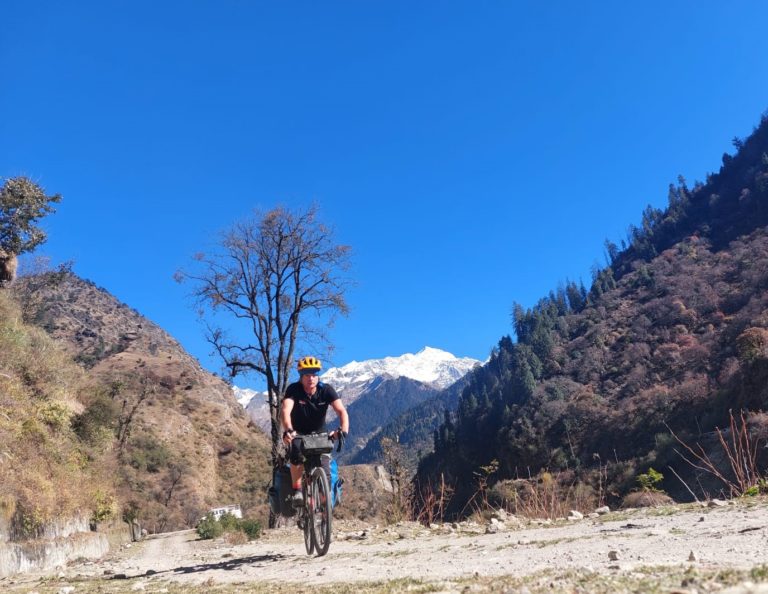
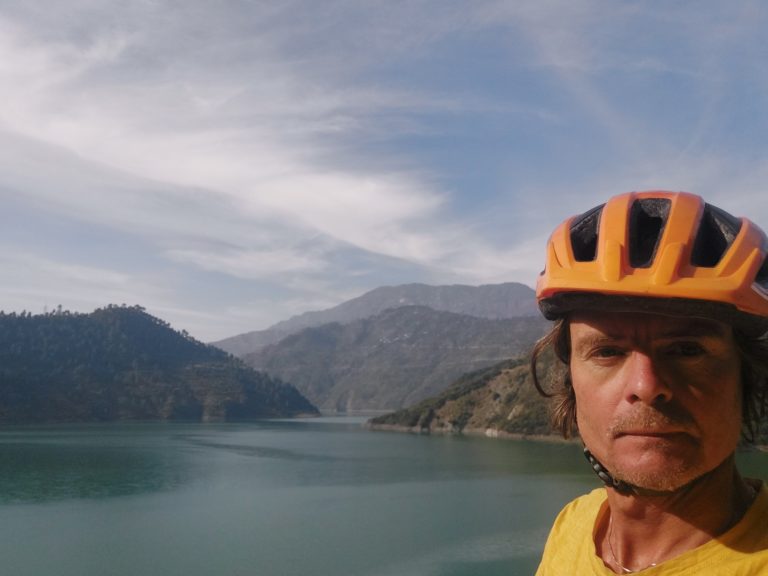
India’s most famous spiritual text, the Bhagavad Gita, states that the art of living is to be free from expectations, and yet there is nowhere quite like India that challenges me to practice that. Before coming to India, I had expectations of Yamunotri, of pristine mountain quiet and cleanliness, a place perhaps that might inspire meaningful contemplation. Indeed it was that vision which had drawn me to undertaking the whole Inida trip. I found Janki Chatti, the town at the trailhead to be a busy construction zone. Silence was entirely absent. The afternoon was filled with angle grinders, pneumatic drills and hammers. There was a dead ox lying on the recently laid stretch of concrete. When night fell a drunken wedding party kicked off in a clearing just behind my hotel. Loud Indian pop music blared throughout the entire night.
At 6 a.m. I stopped trying to sleep and made my way through staggering drunks to the walking trail to the temple. An 8 kilometre steep climb awaited, and every inch of it was littered with plastic waste. To look up, I saw the beauty, but climbing steeply, my eyes were largely trained on the ground and the unbroken 8km trail of discarded snack packets and plastic cups. The only people I passed on route were manual labourers, repairing flagstones as if a crack in the paving on a trekking trail at 3000 m were more important than ankle deep plastic. Nobody was picking up litter, I didn’t pick any myself – where to begin?
I arrived at the temple after a couple of strenuous hours, sleep deprived and suffering a strong altitude headache and frankly, depressed. Tired, I went inside and took the first seat I saw, but was instantly scolded by the resident priest as it was apparently reserved for Brahmin butts only. A mad urge in me arose to keep going, up the 7000m peak in front of me, it seemed I had only arrived at the point where inspiration might begin, but I would have to continue in snow, and clothing-wise I was thoroughly unprepared. I took solace in the fact that I had completed what I set out to do.
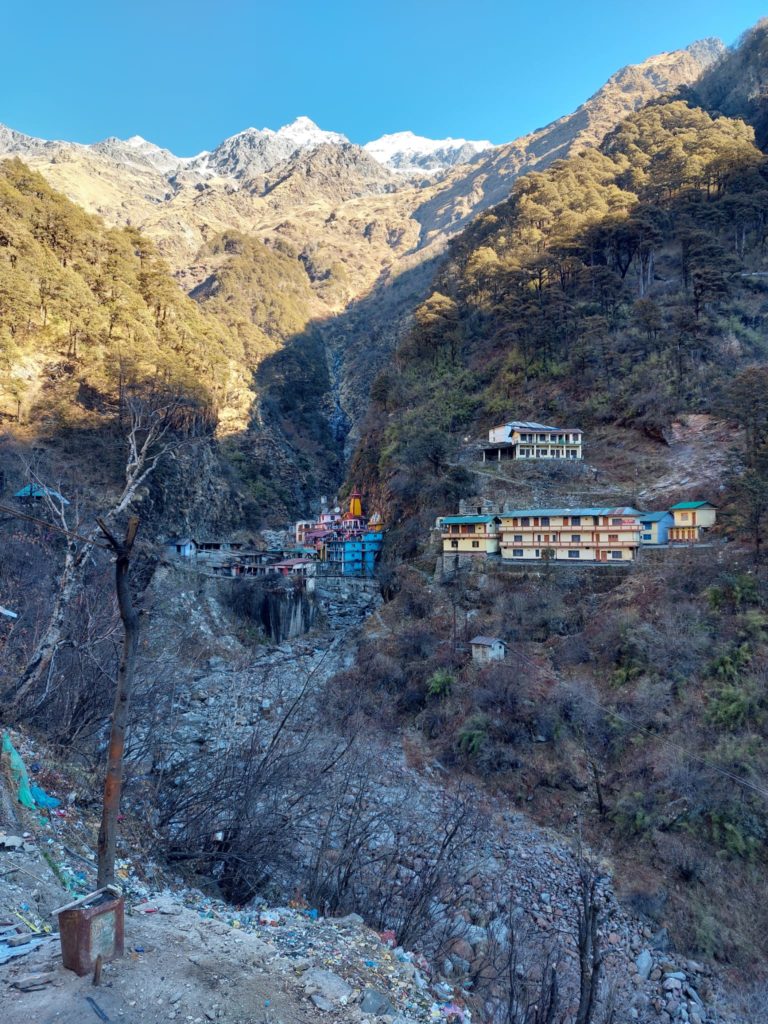
I later found out that the goddess Yamuna is the sister of the Devil. It seemed to fit (I suspect she has been whispering to me all my life). The blessing supposedly received by one who visits her abode (Yamunotri) is that her brother will be lenient at the hour of death. My happiest memories of Yamunotri were of leaving it.
Fifty effort free kilometers followed as I cruised back down the route I had climbed, sitting up and enjoying the scenery. Three days of beautiful sunshine and cycling followed on quiet mountain roads with spectacular views, occasionally stopping to bathe in natural hot springs.
I had from before I set out believed I was making a pilgrimage to Yamunotri, but as I cruised the last 30 km descent into Rishikesh, it occurred to me that no town could be more apt for my personal pilgrimage, a place in which my life took new direction, the home of my Yoga teachers and many splendid memories. I felt purified.
